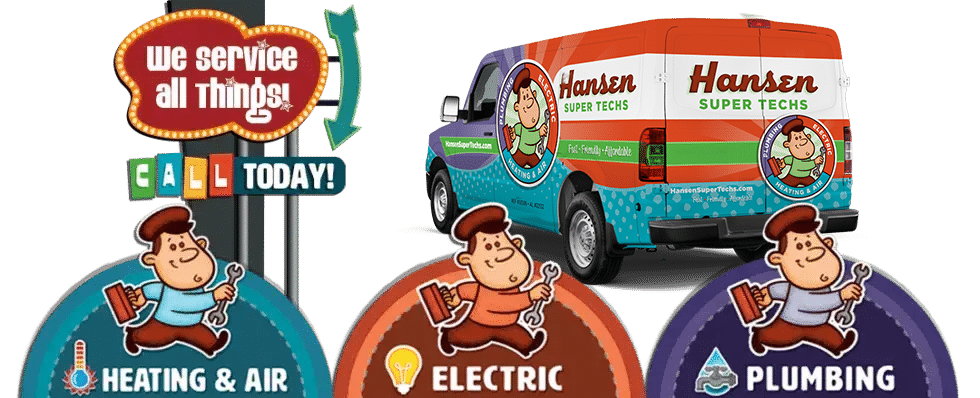How To Prepare Air Conditioner for the Summer

One of the biggest expenses you’ll pay as a homeowner is that of cooling your home in the summer. The energy bills for air conditioning can eat up a significant chunk of your budget, but it doesn’t have to be that way. Many people don’t know that they can keep their summer energy bills from going through the roof by doing some simple work on their AC system.
A typical air conditioning system actually consists of two parts. There’s an indoor air handler and an outside compressor. The latter is where you’ll be focusing most of your attention. It’s been sitting out in the elements all year, and a good examination can help prevent future problems.
By doing certain maintenance tasks on your air conditioner’s condenser unit each year, you can cut costs and save energy. These tasks can be accomplished in a few hours, and they can help your system run more efficiently. This may not seem so important at the beginning of the season when the days are pleasant and mild. Once the endless waves of heat loom in front of you, it’s easy to see how running the AC all day, every day, can really impact your wallet.
Safety Before All Else
Doing HVAC maintenance and repairs is a job generally reserved for professionals. It’s imperative that you only do work on the condenser unit of your air conditioner. This is typically located outside your home on a slab of concrete.
Most of the indoor portion of your system is not safe for you to work on. You should restrict yourself to changing the filter, checking the drip tray beneath the coils for mold and ensuring the drain tube is clear. The sealed refrigeration system on your AC is dangerous for a homeowner to tackle as a DIY project. Professionals have many specialized tools that you don’t have access to, and they possess the training and experience needed to do their work safely.
Before you begin work on your condenser, make sure there’s no power going to it. Find your electrical panel and circuit breakers. Locate the switch that controls electricity to the air conditioner, and shut it off. The condenser also has its own power panel, where current flowing to the unit can be cut off directly. Typically, there is also a weatherproof disconnect box for the condenser. Make sure you disable this too.
Sometimes your compressor can maintain a stored electrical charge for a while after the power is cut. To be extra cautious, wait 30 minutes after everything has been turned off before beginning your work.
Replace the Filters
This step is probably the easiest of all, and it’s almost the only one you should attempt indoors. Your air conditioner most likely has either a replaceable or reusable filter that needs to be changed or cleaned approximately every three months. If you live in a dusty area or have pets that shed in your home, this may need to be done as often as once a month.
If this filter isn’t cleaned, airflow can be restricted. That will cause your system to work overtime, trying to force air through the clogged filter. Plus, all that trapped dust gets recirculated through the ducts and back into your home. For people who struggle with allergies, this extra dust can create severe health problems.
When you can see that your filter is clogged, it’s time to make the switch. A replaceable filter will need to be removed and a new one put in. Reusable filters will need to be removed, gently cleaned of dust sticking to the material, dried and slid back in place. If one is especially dirty, soap and water can be used.
Clear Any Debris Out the Condenser
The condenser coils are located on the portion of your air conditioning system that is outside the home. The sides look like grilles or fins. Beneath these, you’ll find the fan blades of the unit. If you left this uncovered through the fall, winter and spring, a lot of debris is likely trapped inside.
First, remove the top and side panels from the unit. You’ll probably need a screwdriver for this task. When lifting the top, be aware that it may be heavier than expected, and be careful not to tug any fan wires by accident. The bottom of your condenser unit will probably be covered in leaves and other leftovers from the autumn. These materials can clog some of the condenser coils. Clean them all out. If your unit has one, make sure the drain is clear.
Clean the Condenser Coils
The soft brush on a vacuum can gently clear away most of the debris you couldn’t remove by hand. Go slowly, being careful not to damage the fins. For extra tough messes, you can purchase an AC cleaner spray designed especially for this.
Gently use your soft brush to clean the fan blades of the condenser. If the fan motor has oil ports, it’s a good idea to spray a small amount of WD-40 onto these to keep things running well. Mop up any water that may be sloshing around. Tighten any loose bolts, and then reassemble the entire unit.
Inspect Coolant Line Insulation
There are coolant lines that run from the air handler inside your house to the compressor outside. They’re typically coated in insulation to boost their energy efficiency. It’s not uncommon for some of this insulation to become frayed or damaged. Sometimes, it even goes missing entirely. To keep your system from losing energy, buy foam insulation sleeves from a hardware store. Install them in places where the insulation is damaged or missing.
Check the Concrete Slab and Surrounding Area
If the concrete slab on which your condenser rests isn’t level, your machine will have to work harder and use more energy. A quick way to make the slab level is to slip a piece of wood beneath it to prop it up slightly. Once you’re confident it’s stable, slide gravel underneath in incremental amounts. When it’s level, remove the block of wood.
You should also check the area around the concrete for anything that might obstruct the fans. Large plants, a lawn that has grown out of control and even leaves brushing against the unit can all affect performance.
Make Sure Your Air Conditioner Is Running Well
After you’ve allowed the condenser to fully dry, it’s time to test out your AC. Before powering everything back on, turn the thermostat in your home to the off setting. Then, restore the electrical power from the circuit breaker at the main panel. Once this is done, turn your thermostat to cool, and the unit should begin working. If it doesn’t, you may need to call in the professionals for a quick checkup.
Your Local HVAC Resource
Hansen Super Techs is a full-service cooling and heating company in Theodore that can assist you with maintenance, repair or installation from Mobile to Biloxi and beyond. We’ll also take care of your indoor air quality, perform electrical or plumbing services or help you with a generator. Give us a call today to discuss your needs or schedule an appointment.


